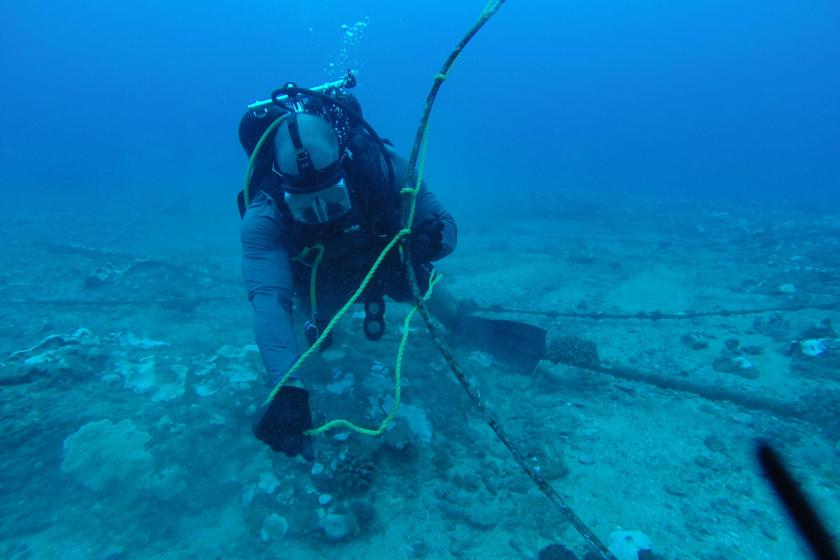Subsea Cable Alternatives Get Serious Attention
Subsea cable alternatives can provide a level of comfort for those concerned about disruptions. Realistically, they will continue to play a small, but critical role in the short term.

The importance of subsea cable networks that carry the bulk of all international Internet traffic is being called into focus (yet, again) due to the conflict in the Middle East. The volatility of the region is forcing enterprises and providers to consider satellite and ground cable options that in the past were dismissed because of their cost and performance.
What is driving this change? Many critical cables linking Asia, Africa, the U.S., Northern Europe, South America, and more converge in choke points at the edge of the Red Sea and Mediterranean Sea. Recent subsea cable cuts, while still not confirmed to be malicious acts, have highlighted a secondary issue. Namely, even if the cable cuts were accidental (as most are internationally), repairs are much more challenging in the region. Specifically, logistics and permitting are much more difficult. And there are concerns that operators cannot get insurance (or will have to pay exorbitant amounts) to conduct repairs in what is essentially a war zone.
Alternatives come into play
The importance of the international subsea cable network cannot be understated. The cables carry about 95% of all global Internet traffic. Additionally, $10 trillion of financial transactions flow over them per day, according to Telegeography.
Even with that, this infrastructure is often ignored or overlooked until there’s a serious problem — like the recent cable disruptions in the Red Sea. Those disruptions are bringing satellite and cross-continent cables into focus.
Until now, these approaches have been relegated to special use cases for a number of reasons.
Satellite data transmission services typically cost more to send data than if it is done over Internet subsea cables. Additionally, many satellite services have lower bandwidth compared to the subsea cables. And then there is the issue of latency. A signal is sent to a satellite in geostationary earth orbit (GEO), and then back down to an Earth substation takes about 250 milliseconds. That’s enough for a noticeable delay in real-time communications. In contrast, a transmission between the Middle East and, say, India carried over a subsea cable would take about one-tenth that time because of the significantly shorter distance the signal traverses.
Still, satellite services are starting to target specific routes to provide an alternative to subsea cable. One such recent offering is from CMC Networks, a global Tier 1 service provider serving Africa and the Middle East. In March, the company began satellite connectivity services across Africa and the Middle East to keep African businesses connected to the internet during subsea cable outages. In doing so, it tried to address the latency issues of satellite communications by including Low Earth Orbit (LEO) and Medium Earth Orbit (MEO) connectivity to the more common GEO satellite connectivity to its portfolio of solutions. The LEO and MEO services do not have the latency issues of GEO services.
The other alternative is to build and use more cross-continent cables.
One challenge with such cables is that many permits are often required to build a single cable due to it crossing many jurisdictions. Another challenge is the massive amount of work needed to plan, dig trenches, lay cable, and bury every foot of the length of the cable. One needs to consider the 40-plus years of trouble providers have had to deploy fiber-to-the-home to get an appreciation of the scope of the issue.
Besides the issue of potential subsea cable disruptions, cross-continent cables are getting a closer look due to shifting traffic patterns. In China and India, 48% of Internet traffic is now cross-continent, according to the ITU.
A final word about subsea cable alternatives
These alternatives can provide a level of comfort for those concerned about subsea cable disruptions. Realistically, they will continue to play a small, but critical role in the short-term.
“Global internet traffic will continue to grow, and the only scalable way to support that traffic is via subsea cables,” says Jason Carolan, Chief Innovation Officer, at Flexential, a provider of data center and IT solutions, services, and consulting. He notes that capacity grows with each new deployment, shaving off additional milliseconds of latency with new routes.
However, the alternatives are important. “The growing diversity in routing will reduce geopolitical impacts and government concerns,” said Carolan.
Related articles:


